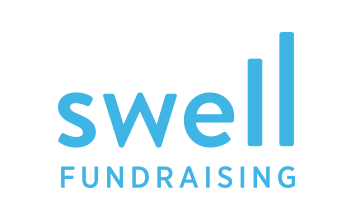Your nonprofit is about to put on the fundraising event of a lifetime. You’ve booked the catering, secured a beautiful venue, and planned an engaging fundraising idea that is bound to inspire donations. However, you’re missing one crucial element: a reliable way to market your event so people will attend!
Your nonprofit’s website is one of your marketing tools when it comes to promoting your events. As the foundation of your organization’s digital presence, your website naturally attracts a lot of organic traffic. Therefore, it’s essential that you leverage your website to boost registration and attendance for your fundraising event.
Use these key tips to promote your nonprofit’s next event on your site:
- Create a strong event landing page.
- Market your event on your blog.
- Adapt your email sign-up form to gather interest.
- Embed engagement tools such as a registration page, fundraising total and list of recent donors/attendees.
Whether you’re promoting your annual walk-a-thon, hybrid event, or a peer-to-peer fundraiser, you can use your website to build excitement for your event. Let’s begin.
Create a strong event landing page.
An event landing page provides prospective attendees with everything they need to know. Plus, this is a great opportunity for people that aren’t familiar with your nonprofit to get to know your organization and its mission.
According to Morweb’s guide to the best nonprofit websites, a strong event landing page should include the following details:
- Type of event
- Time and place
- Purpose of fundraising event
- Registration instructions with an embedded registration form or outbound link to an event microsite
- Perks of attendance
Along with including these logistical details, you’ll also want to make your event landing page visually appealing. If you’ve held this event in the past, add in images from the event to give prospective attendees a visual of what to expect. If this is a brand new event, consider creating engaging graphic designs that summarize your event. According to NXUnite, graphic design examples like infographics and videos can build excitement and deliver event details in a fun and captivating way.
Market your event on your blog.
Your nonprofit’s blog is a great way to get your audience excited about your event beforehand. Content also attracts new, organic traffic into your site. By creating several pieces of content related to your event, you’ll be able to increase interest and attendance. For example, you could feature event honorees or the event committee, share a sneak peek of the entertainment, highlight sponsorship stories or discuss event highlights from the last time you hosted this fundraiser.
Begin posting about your event a two-three months ahead of the big day and stick to a consistent posting schedule. This will lead to higher rates of engagement and help your audience get to know your nonprofit even better. Plus, it will encourage accountability on your team’s behalf to continue creating great event content. While creating blog content takes time, you can always enlist support from your volunteers or major donors to write guest pieces.
As you start publishing content, track important metrics like how people are reaching your blog page, how many people are reading your content, how long they read your content, and more. This will give your nonprofit invaluable insight into how to adapt your blogging strategy to better appeal to your audience.
Use your email sign-up form.
To supercharge your marketing strategy, you’ll need to use other channels to get the word out about your event, like email. Adapt your email sign up form or pop-ups to include information about your events. Leverage your website to encourage supporters to easily sign up for this email newsletter. This can be an effective pop-up tool if a guest to your landing page starts to exit the page without registering - serve this option so that they, at least, sign up for an email. Email is an effective way to build excitement for your event because you can reach supporters more directly and craft highly personalized communication experiences through segmentation.
Your nonprofit can use email in the following key ways:
- Send links to new blog content related to your event
- Share event registration links to streamline the sign-up process
- Ask for donations leading up to your event
- Encourage peer-to-peer fundraising in conjunction with your event
- Celebrate your committee or event champions
To build your email contact list, create a simple sign-up form on your event landing page. This form should ask people to fill in their email address and check a box consenting to opt-in to your newsletter. Bring attention to your email form through calls to action (CTAs) designed to pop-up when a guest attempts to exit the page or scrolls down to a certain point. A web design best practice is to make your CTAs stand out by highlighting them in a bold color or increasing the font size from the rest of the page.
Add social media integration.
Social media is an essential tool to add to your multichannel marketing strategy. With social media integration, you can quickly expand the number of people that see your website content, therefore boosting event registrations. Social sharing allows your nonprofit to share any post, page, or image from your website directly onto popular platforms like Facebook, Instagram, Twitter, and LinkedIn.
Not only will this help promote your event, but it will also direct traffic to your website. As a result, more people will be able to learn about your nonprofit and different ways they can get involved beyond your event. When using social sharing, consider which platform is most relevant for your content. For example, Instagram is great for image-based posts while Facebook is better suited for longer-form written posts.
You can also use social media integration to show your feeds right on your website, allowing visitors to see your recent social media activity. Plus, users can easily click on your feeds and be directed to your social media pages, making it easy to hit follow. To add social media integration, work with a nonprofit CMS that has social sharing tools.
Engage guests through interactive tools
Your event is a campaign and the landing page can utilize real-time updates to capture guest attention. Look for tools that you can embed on your website landing page that will immediately capture attention and direct a guest to give if they cannot attend.
These engagement tools including the following:
- Real-Time Fundraising Updates
- List of individuals who have given or purchased tickets
- Leaderboards for peer-to-peer events
- Embedded forms for giving or registration (or buttons with outbound links)
These tools create an instant call to action and provide a guest with the most important driver for attendance - FOMO (fear of missing out). Through these features, you are highlighting peers who are giving, registering and fundraising and demonstrating to guests why they should attend or give.
The Gist
When it comes to promoting events, your nonprofit’s website is an important asset. Leverage the website features you already have to build a strong marketing campaign. If you don’t already have a blog set up or social sharing tools, use a nonprofit-specific CMS to expand your website’s capabilities or utilize the content section of your event microsite with Swell.
Guest Author: Murad Bushnaq
Murad Bushnaq is the Founder and CEO of Morweb. Since its inception in 2014, Murad has acted as Creative Director and Chief Technologist to help nonprofits spread their vision online through engaging design, intuitive software and strategic communication.




